Abandoned bus in a field


Hokkaido is full of mysteries. This fact itself isn’t a mystery–I don’t think there’s a soul alive who could catalogue the shuttered businesses, collapsed farmhouses, concrete shells, railless train stations, or empty fields littering the island. And maybe we don’t want anyone to–this, after all, is part of the allure of where we live. That feeling of being the last person awake at the end of the night, present where so many before you have left. Sure, that’s maybe over-poeticizing the thing. Whatever. When was the last time something was over-poeticized in your life?
But let me make a quick argument for you here: more mysterious than any shutter that never rolls up or roof that has fallen down is Hokkaido’s elusive (but ever-present) Abandoned Bus in a Field.Don’t tell me you haven’t noticed them. Watching you, silent forms in fields, some half-sunk in soft dirt, some aged beyond identification, missing windows, paint. Some with the destinations still displayed in the space above the windscreen, some with the bus company’s name or logo painted on the side. Some so old that the name is hand-painted. Some missing doors, some whose doors are rusted shut.
If you haven’t noticed them, then after reading this article, you will start noticing them. They’re everywhere. Unless you live in Sapporo. Then you’re shit outta luck, as they say.
I collect Abandoned Buses in Fields. I’ve found 37 so far, but I haven’t really been looking that hard. Just hard enough.


There are two main types of Abandoned Buses in Fields. The first is… less mysterious. They sit alongside farmhouses, or out in recently tilled fields, and the windows are stacked with tarps and deadwood and old furniture and car doors and bags of debris and stacks of whiteboards and used tires and rope, kilometers upon kilometers of rope, and glass buoys kilometers upon kilometers from the sea and all manner of garbage for which the cleverest DIYer couldn’t find a use. These are more aptly called “Repurposed Storage Units in a Field”. See, it doesn’t make sense to keep all your stuff in a barn when you own 100 acres and you can only fit so much, uh, farm stuff in the back of your Iseki tractor. So when the local bus company is updating their fleet, you buy their used bus, you drive it out into your field, you dispose of the seats (don’t ask me how), and you store farm equipment in it. It’s pretty smart, if you think about it: buses are watertight, tough, and huge on the inside. They make terrific shelters for stuff you need to want to keep out of the rain and wind. Once you’ve seen a few, you start to develop a bit of a sixth sense for them. You can tell when one is going to be nearby: the quality of farmhouse, the degree of countryside, even the weather plays a part. You slow the car, you start to take your eyes off the road, scan the fields. You know what to look for: the row of black rectangles in a white frame, maybe a red or a gold line marking the side, the windows and roof sticking up above the lip of a rice paddy.
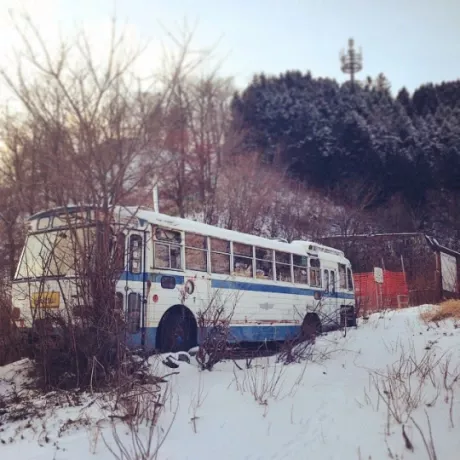
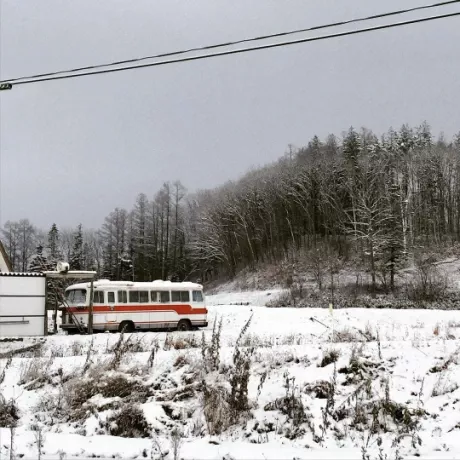
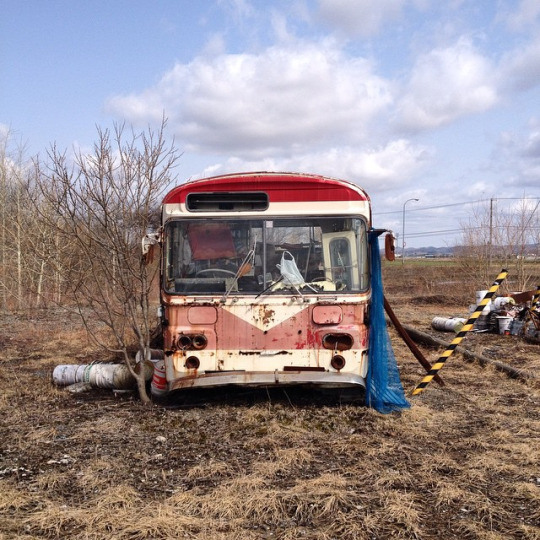
The second kind of Abandoned Bus in a Field, however, begs questions. This is the Mysterious Abandoned Bus in a Field. It sits in ditches tens of kilometers from any structure. It sits in a tangle of bushes on an abandoned road, a Department of Transportation project that never got finished. It sits on a patch of concrete above National Route 273. It can’t be seen without leaving the road. It sits under the arms of a big tree in full bloom. I heard that there’s one near where I live, perched at the top of a narrow dirt road, over a cliff. The guy who found it has no idea how it got there–the road looked too narrow for the bus to navigate. Maybe the driver got stuck and had to leave the bus there. It’s still there today.
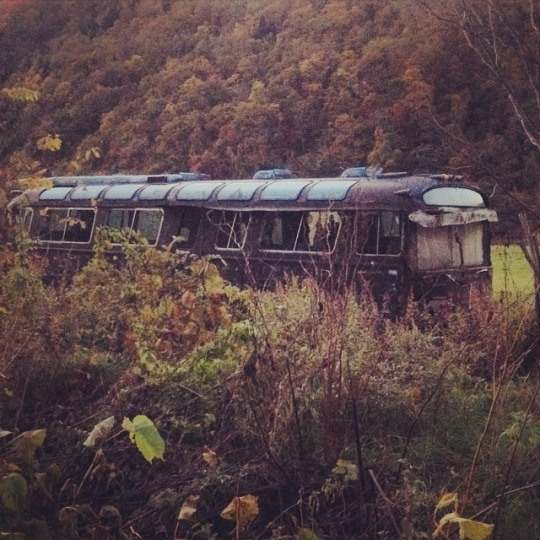
Here is one of the questions that the Mysterious Abandoned Bus in a Field asks: is this a Mysterious Abandoned Bus in a Field, or is this a Repurposed Storage Unit in a Field? Maybe there’s a tarp nearby, weighted down by a pile of broken cinderblocks. Maybe there’s a mountain of bald tires. Are the two connected? Does this belong to someone? Here is how you can tell. This is a trick I have learned so that I can tell Mysterious Abandoned Buses in Fields from Repurposes Storage Units in Fields: the Mysterious Abandoned Bus in a Field is always empty.
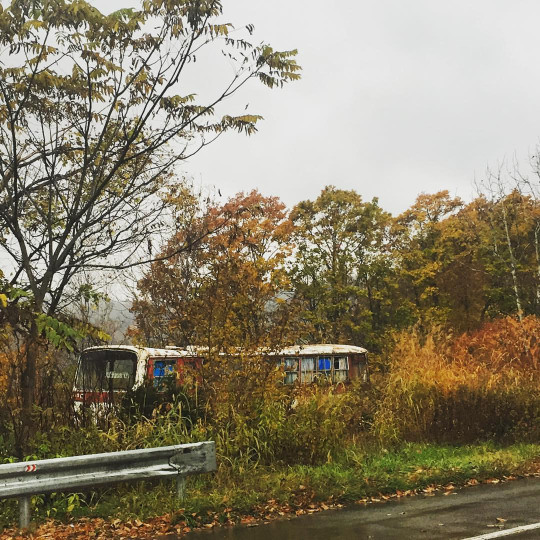
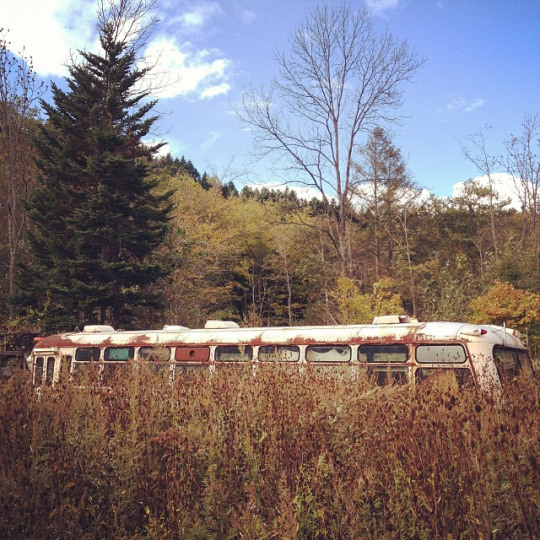
You can force the doors on Abandoned Buses in Fields. Unless they’re really badly rusted over, most of them will give with a little elbow grease. There’s usually no point in entering Repurposed Storage Units in Fields–these are someone’s property, even if it appears to be abandoned property. Don’t bother. The Mysterious Abandoned Bus in a Field’s doors will give with a jolt, then they’ll come gently. They made good rails and hinges in the 1970s and 80s, I guess. The inside will smell like moss and life. The ground will be soft but won’t give that much. Maybe the driver’s seat will be there. The seats in the back will be gone. The windows will be remarkably clear. The chrome will be remarkably shiny. There might be an aluminum luggage rack. You can stand up inside to your full height. The trees, the bushes, the tall grass will all seem closer from the inside than it looked from the outside. But the road will look a lot further away. If there were any noises outside–the trees swaying, a far-off car–you will not hear it. You might walk all the way to the back of the bus and look forward. Mysterious Abandoned Buses in Fields are always longer when you’re standing at the back, shorter when you’re standing at the front. You might feel like the bus in front of you, the big empty space, is actually full of air, which it is. Walking back to the front might feel like swimming. When you exit the bus, you might want answers–where this bus went, who put it here. I guess the thing about the Mysterious Abandoned Bus in a Field is that it doesn’t yield answers. It’s just empty.
Of course this maps very well onto Hokkaido as a whole–standing on the inside of this once-useful, now-empty thing; feeling that it’s full, but of what, you can’t tell. I don’t know that there’s any hallowed wisdom or poignant insight you can scrape off the insides of these buses, but if there is, I’d be happy to hear what you think. You can find all my Abandoned Buses in Fields if you search for the hashtag #abandonedbusinafield on Instagram.
Next
How to climb Kitoushi-yama, a small hill just north of Asahikawa, in the wintertime.